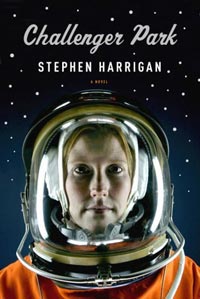|
|
Review: Challenger Park
by Jeff Foust
Monday, April 24, 2006
Challenger Park
By Stephen Harrigan
Knopf, 2006
Hardcover, 397 pp.
ISBN 0-375-41205-0
US$24.95/C$34.95
Most novels that involve space in general or NASA in particular focus far more on the technology than on the characters. Authors may go to great lengths to describe cutting-edge—if often implausible—spacecraft and other technologies, using them as instruments to twist the plot towards its climax. Characters, on the other hand, are often neglected, making them uninteresting if not outright predictable. However, Challenger Park, by novelist Stephen Harrigan, is not one of those books. Instead, it uses the space program as a realistic backdrop for a familiar, yet compelling, human drama.
Lucy Kincheloe is a wife and a mother or two young children—and also an astronaut. Despite her otherworldly occupation, she faces the same struggles as many women: juggling career and family, including dealing with an asthmatic son and a weakening relationship with her husband, a fellow astronaut who has fallen out of favor with the space agency after an incident on his most recent shuttle flight. These issues grow more serious as Lucy is finally assigned to a shuttle flight to the ISS, and further complicated by a relationship that develops between her and Walt Womack, a recent widower who is the leader of her training team. Those personal problems are eventually brought to a head by the mission itself, which suffers its own problems that force Lucy to stay in space far longer than she had planned.
On the technical side, Harrigan has clearly done his research. In the acknowledgments he cites a number of Johnson Space Center employees, as well as several astronauts, that he interviewed in order to gain insight into the work and personal lives of those who fly the shuttle, as well as those who train the astronauts. The book is peppered with technical references, enough to maintain an authentic tone but not so many as to bewilder the average reader. Even the events that befall Lucy Kincheloe in orbit, while unlikely, are not unduly contrived. There may be minor technical flaws here and there, but not enough to distract most readers from the story itself.
| The book is peppered with technical references, enough to maintain an authentic tone but not so many as to bewilder the average reader. |
One passage in particular may stand out to readers familiar with NASA. About halfway through the book Lucy and her husband, Brian, get into an argument about his career as an astronaut, which effectively is over, and hers, which is just beginning. Brian lashes out at what he sees as the emptiness of the space program at the time:
When did the whole idea of spaceflight change from actually going somewhere to going around and around? I mean, you have to admit it’s gotten to be kind of a joke. When we were kids we had people on the moon! NASA had serious plans to go to Mars! Now all they can do is send us up two hundred and forty miles. Christ, that’s about as far as it is to Dallas! We build a space station so we can pretend to have a destination. Then we keep the shuttle flying so we can have a way to get back and forth to the station. All it is is busywork. Why hang around for that?
To put that passage in context, Harrigan set the book in a narrow window after the 9/11 attacks and before the Columbia accident in early 2003, and thus during a period when NASA’s human spaceflight program seemed to be linked exclusively to the shuttle and station.
However, Challenger Park is ultimately not a novel about space, but instead a novel about human dramas, using the space program instead as a unique setting. That drama will appeal to a much wider audience than a space-themed technothriller, and Harrigan does a fine job telling that story. After all, astronauts are people—with all their emotions and flaws—too.
Jeff Foust (jeff@thespacereview.com) is the editor and publisher of The Space Review. He also operates the Spacetoday.net web site and the Space Politics and Personal Spaceflight weblogs. Views and opinions expressed in this article are those of the author alone, and do not represent the official positions of any organization or company, including the Futron Corporation, the author’s employer.
|
|
